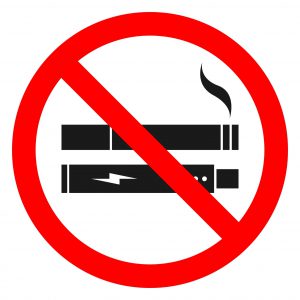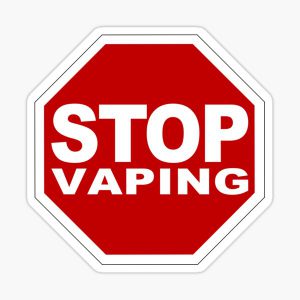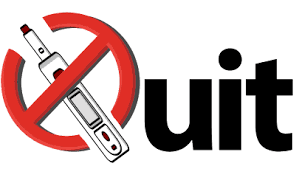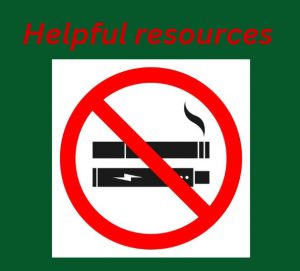Minisink Valley school community:
 We’re reaching out to share information about electronic cigarettes/vaping and their associated potential health effects. Vaping continues to be a problem all school districts encounter and you’ve likely read recent news reports about a New Rochelle High School nurse who used Narcan to save a student who vaped what the student believed was marijuana.
We’re reaching out to share information about electronic cigarettes/vaping and their associated potential health effects. Vaping continues to be a problem all school districts encounter and you’ve likely read recent news reports about a New Rochelle High School nurse who used Narcan to save a student who vaped what the student believed was marijuana.
Our high school administrators spend a great deal of time with students who don’t follow the district’s policies. We again ask you to review the district’s Code of Conduct, District Policy 5640, “Smoking Tobacco and Cannabis (Marijuana) Usage” and, for high school families, the High School Student Handbook
In the event you’re not fully familiar with the very serious issues tied to vaping, we’re sharing some important U.S. Food and Drug Administration (FDA) facts with you:
 What is vaping?
What is vaping?
- Electronic cigarettes are battery-operated devices that heat a liquid into vapors, which are inhaled (or “vaped”) by the user. The liquid can be anything from a flavored water-type mixture to liquid nicotine to THC (the principal active ingredient in marijuana). Flavored nicotine pods are very popular. Each pod may contain high amounts of nicotine.
- Vapes that contain nicotine are a type of tobacco product called electronic nicotine delivery systems (ENDS). Other names for vapes may include e-cigarettes, e-cigs, vape pens, vaporizers, and e-pipes. Popular brands include Puff Bar, JUUL, Vuse, and SMOK. These vapes can contain high levels of nicotine, a highly addictive drug.
- Vaping is not harmless. It carries real health and safety risks, including addiction and other negative health effects. Teens who vape may experience coughing, wheezing, nausea, vomiting, headaches, and dizziness.
- Under federal law, consumers must be age 21 or older to buy vape products. Vapes come in many shapes and sizes. Some look like cigarettes, cigars, or pipes. Others look like everyday objects, such as flash drives or asthma inhalers, which can make them easy for youth to hide from parents and teachers.
- In 2021, the annual National Youth Tobacco Survey found that 2 million youth use e-cigarettes. Many teens vape on a regular basis, and most choose flavored vapes. For example, 44 percent of ENDS high school users are vaping on 20 or more days a month, and 28 percent use e-cigarettes every day.
 This is why you need to be concerned:
This is why you need to be concerned:
- According to the Partnership to End Addiction, the practice of using vaping devices to consume marijuana or cannabis products is becoming increasingly widespread. Recent data shows that more than one-fifth of high school seniors have reported vaping marijuana in the past year.
- Vapes can contain the same harmful chemicals found in cleaning products, nail polish remover, weed killer and bug spray.
- Vapes can leave young people at increased risk of depression and anxiety.
The nicotine in 1 vape can = 50 cigarettes. - Nicotine can rewire a teen’s brain to crave more nicotine and can create addiction.
- Brain changes related to nicotine exposure may have effects on attention, learning, and memory that promote addiction to the drug.
- Teens who vape may become addicted to nicotine faster than teens who smoke cigarettes.
- Teens who vape are more likely to start smoking. Cigarette smoke includes a mix of chemicals that cause serious disease and death.
- Vaping can expose users to toxic chemicals and metal particles—such as lead, chromium, and nickel—that can harm the lungs.
- Some chemicals found in cigarette smoke—such as formaldehyde, acrolein, and acetaldehyde— also are found in some e-cigarette aerosols. Inhaling these chemicals can cause irreversible lung damage.
- E-liquid that contains nicotine may be toxic if swallowed. Accidental exposure to e-liquids in children can lead to nicotine poisoning and even death.
- ENDS can explode and cause serious injuries. The cause of explosions is not always clear, but the problem may be related to the batteries in these devices
We’ve included a list of resources which can be helpful to you. Please take a few minutes to have a serious conversation with your child about the critical health hazards associated with vaping. We want our students to be healthy.
Secondly, we ask you to remind them about the consequences of vaping on district grounds. The use and/or possession of vapes, electronic cigarettes or other related products is a violation of school policy and will be subject to disciplinary action. Students must abide by the policy, which is also consistent with state laws.
 Additional resources:
Additional resources:
- Vaping: It’s All Smoke and Mirrors
- Vaping: What Families Need to Know to Help Protect Children, Teens and Young Adults
- The Real Cost of Tobacco
- Quit Vaping
- The Facts on e-cigarette use among youth and young adults
As a reminder, your child’s health care provider is an outstanding and trusted resource for you should you have any additional questions and concerns.
Sincerely,
Brian C. Monahan
Superintendent
Kenneth Hauck
Principal
